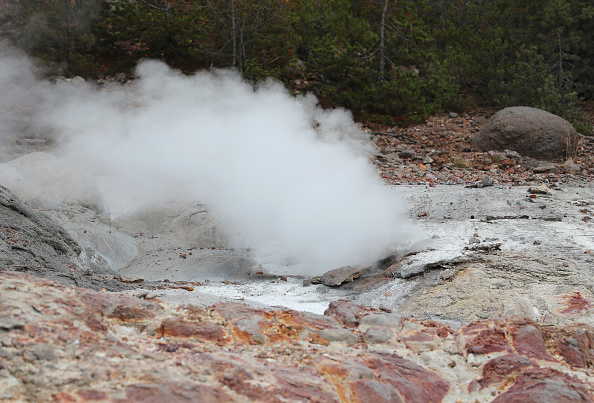When we think of geothermal heat, hot springs like the one above quickly come to mind. However, there is a less dramatic way to enjoy warmth (and cooling) from the ground below us.
Contractors and developers tasked with designing and building new facilities for commercial use are well aware of customers’ interest in reducing their carbon footprints, and it is common for new buildings to include green design elements such as low-emissions building materials, LED lighting and solar panels. Efficient heating and cooling systems are key to reducing a facility’s energy consumption, and there are plenty of choices for builders looking to stay green.
One choice is to install ground source heat pumps, also called geothermal heat pumps. The systems have a high up-front cost, but according to the Department of Energy, users can expect to recover the extra expense through energy savings within five to 10 years. Plus, there are some generous rebate programs available that can bring the cost down and speed up the return on investment. Rebate programs change from year to year, so be sure to look at the latest information about what’s available in your area. System manufacturers usually know about federal rebates, but they may not be aware of state and local incentives.
Okay, we’ve established that ground source heat pumps can be a good investment. How do they work?
The geothermal system relies on an underground system that circulates fluid through a series of connected pipes, using the earth’s relatively constant temperature to either absorb or release heat, depending on whether the air at the surface is colder or warmer than the soil around the pipes. The heat pump concentrates the heat and releases it into the building on cold days, or sends it back underground if the building needs cooling. Heat distribution within the building is accomplished with conventional ductwork.
Because the entire system is sheltered from the weather, ground source heat pumps are low maintenance, with a system life of about 24 years for the inside components and more than 50 years for the underground system.
The New York State Energy Research and Development Authority has a short video on its website that explains the system in a way customers will understand:
The Department of Energy states that ground source heat pumps are appropriate for use across the US, and more than 50,000 of the systems are installed every year. Its a proven technology, and appropriate for large buildings, hospitals, schools, apartment buildings and single-family homes.
If you want to learn more, here are a few reliable sources of information:
The Environmental Protection Agency
The Geothermal Exchange Organization
